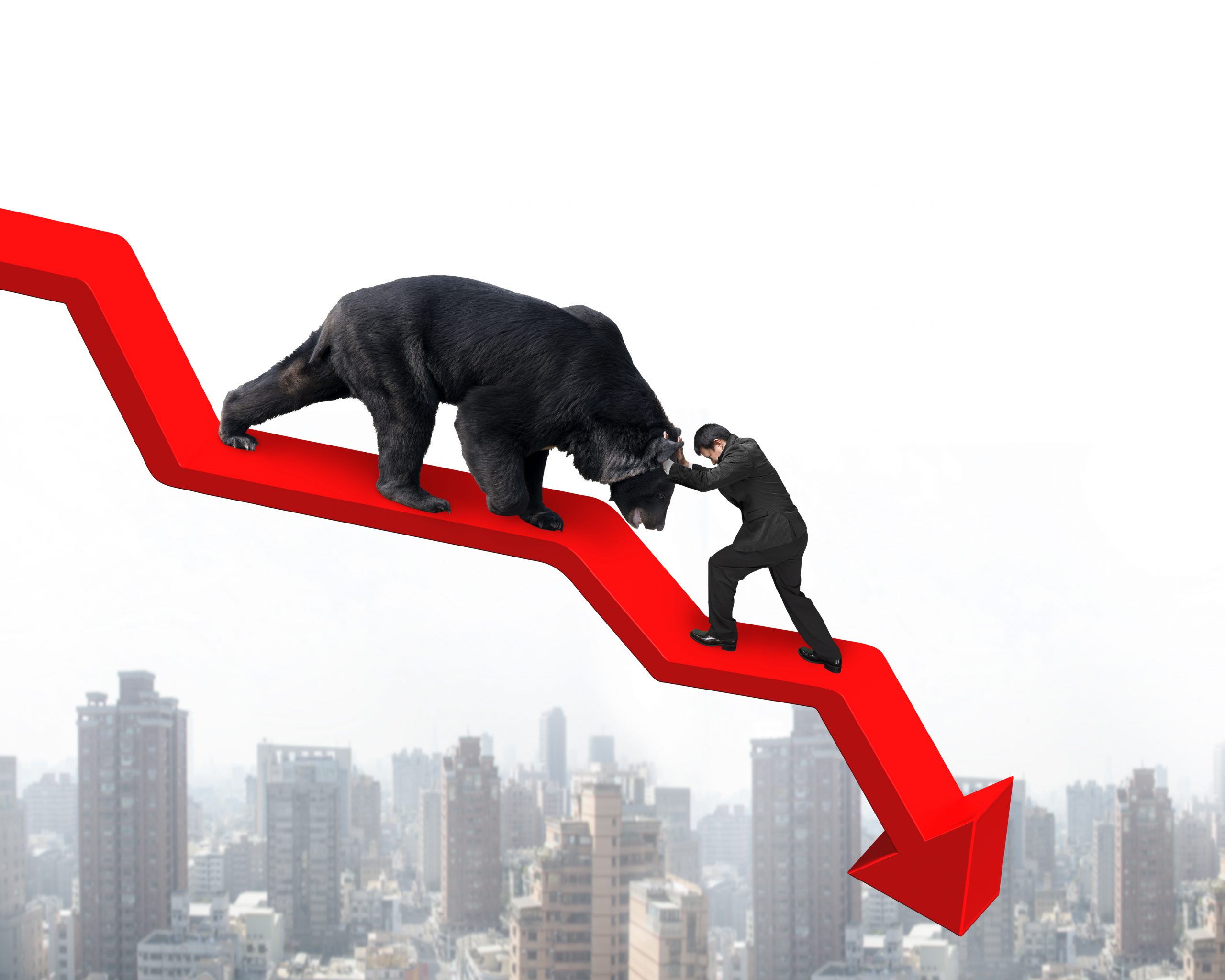
(Please enjoy this updated version of my weekly commentary from the Reitmeister Total Return newsletter).
Investors appear to be in a holding pattern awaiting the results of Q3 earnings season and whether there are growing concerns about a recession on the way. Early signs say yes with Q1-23 earnings estimates now pointing negative which indeed speaks to growing concerns.
This is yet another of 101 different reasons to remain bearish and not to give this recent stock market (SPY) bounce any merit. Sooner or later we will make our way to lower lows as is warranted given the diminishing economic outlook.
The focus of today’s commentary will be on a topic that is not getting much press on the popular media outlets like CNBC and Bloomberg. Yet one that deserves to be on our radars given that it is a black swan type event that becomes all the more possible as interest rates rise.
I will spell it out in this week’s Reitmeister Total Return commentary.
Market Commentary
We are going to take a bit of detour today from the standard discussion of “here is what happened...here is what comes next”.
That’s because you know I am bearish and have been painting that picture with great detail week by week in my Reitmeister Total Return and POWR Value commentary (see archive here).
Over time we have reviewed everything from how low stocks will go...to how best to profit on the way down. Heck, we even have a game plan of when to bottom fish to get back on board the next bull market.
And in the case of this most recent bear market rally, it is no more impressive than the 2 day rally last week that fizzled or any other bear market rally. In fact, we talked about this being a likely place for a bounce to unfold with this 9/27/22 comment:
“3,636 = the June lows. Rarely will you see any correction or bear market that ends without retesting the lows. So that is likely the next point of support as we explore the true depths of this bear market.
It may be hard for stocks to head below this without seeing some of that pain on display that the Fed talked about. Like the employment market finally showing some weakness.
So if we rush down there and pain is not on the menu yet, then this will be ample support perhaps with another juicy bounce to follow. Not an 18% insanity bounce like we say in July/August. Perhaps more like +5-10% awaiting the next economic signals.”
Let that serve as enough of the typical market commentary to make better use of this time to discuss a potential dark side to this bear market. And how it has the potential to be more sinister than your typical weak economic cycle leading to typical bear market.
The key phrase in the above paragraph is “potential dark side” because it very well may not happen. Unfortunately, it could happen and therefore best that we have on the radar just in case.
OK enough preamble. Let’s get into it...
Do you find it interesting that Government bonds, even short-term ones, are paying only about 4% when inflation is twice that level?
Well, this perverse result is happening because this is the most manipulated market on the planet with the Fed owning TRILLIONS worth of bonds as part of their QE (Quantitative Easing) initiatives going back to the Great Recession and then further accelerated during the Covid Crisis.
Plain and simple, prices in Treasury bonds are not truly floating on real supply/demand. Because if they were rates would be much, much higher already.
Beyond the raising of rates by the Fed investors should also be aware of the $90 billion a month in QT (Quantitative Tightening) that is taking place to lower the Feds balance sheet. The point is as more of these bonds are put back to the market place it will increase demand while supply is still low because they are underpaying investors what they deserve.
This is long way of saying that there is much more upside in shorting Treasury bonds as rates should keep going higher. And why we are back in for a second helping of our favorite bond shorting ETF (Ticker reserved for Reitmeister Total Return members) which panned out quite well for us earlier in the year.
As if this higher rate story wasn’t bad enough, check out this clip from a recent Bloomberg article “The Most Powerful Buyers in Treasuries Are All Bailing at Once”. The title kind of says it all, but here are some more details to appreciate.
“Everywhere you turn, the biggest players in the $23.7 trillion US Treasuries market are in retreat.
From Japanese pensions and life insurers to foreign governments and US commercial banks, where once they were lining up to get their hands on US government debt, most have now stepped away. And then there’s the Federal Reserve, which a few weeks ago upped the pace that it plans to offload Treasuries from its balance sheet to $60 billion a month.
If one or two of these usually steadfast sources of demand were bailing, the impact, while noticeable, would likely be little cause for alarm. But for every one of them to pull back is an undeniable source of concern, especially coming on the heels of the unprecedented volatility, deteriorating liquidity and weak auctions of recent months.
The upshot, according to market watchers, is that even with Treasuries tumbling the most since at least the early 1970s this year, more pain may be in store until new, consistent sources of demand emerge. It’s also bad news for US taxpayers, who will ultimately have to foot the bill for higher borrowing costs.”
So if you have more sellers of Treasury bonds...then you have less buyers. Add that to the Quantitative Tightening equation and it once again tilts to greater supply than demand...which tilts to higher rates ahead.
This has some other investors concerned of a much larger debt crisis in the works with the recent UK pension issues being the first warning shot. I recommend you take the time to consider what John Mauldin has to say about this in his most recent weekly commentary: Pension Sandpile.
The summary version is that there has long been great instability in the financial arenas stemming from the obscene amount of government debt from all around the globe. Lowering rates as we had from the early 1980’s to 2021 glossed over these issues because it was much easier for the governments to pay back this debt at lower rates of interest.
Now we have the opposite. We have rates on the rise making it much more expensive for the borrowing countries to pay back. Second, you have weak returns for large bond investors as higher rates = bond value losses.
A lot of that pain shows up in massive pension funds (like in the UK). Once this instability takes root it may be like a Tsunami growing in height and wiping out financial markets around the globe.
Yes, we have heard of this monster before. And it keeps NOT happening as we keep finding ways to sweep these issues under the rug.
The net result over time is it feels like the “boy who cried wolf” scenario. But just like that cautionary tale...there was a wolf in the end.
Meaning at some point the amount of debt will be unsustainable. And yes, that is much more likely to happen in a high rate environment.
No...I am not sounding any such alarms at this time. However, we investors need to appreciate that the odds of this black swan event happening has increased and that we may not be dealing with your run of the mill recession and bear market.
Meaning that IF inflation and bond rates do not start heading south across the globe it creates instability that could tip over to a more world wide event. Think back to the Greek debt crisis from a decade ago. The US stock market went into a defensive shell awaiting the outcome. And that was just a small country like Greece.
Now imagine we are talking about the UK...France...Italy...Japan...or even cracks in the foundation of the US debt markets. Yes that would be very bad for the US economy and stock market (understatement of the year).
Again, I am not a fear monger nor prone to conspiracy theories. Just an investor that appreciates that there is too much debt in the world and higher rates does NOT help the situation.
So let’s just keep an eye on this to make sure things do not get out of hand. Because if it does, then we will want to keep our bearish portfolio strategies in place much longer than previously planned.
In the meantime, we will just yawn through this latest bear market rally expecting lower lows on the way...and thus higher highs for our portfolio built to profit from this outcome.
What To Do Next?
Discover my special portfolio with 9 simple trades to help you generate gains as the market descends further into bear market territory.
This plan has been working wonders since it went into place mid August generating a robust gain for investors as the S&P 500 (SPY) tanked.
If you have been successful navigating the investment waters in 2022, then please feel free to ignore.
However, if the bearish argument shared above does make you curious as to what happens next...then do consider getting my updated “Bear Market Game Plan” that includes specifics on the 9 unique positions in my timely and profitable portfolio.
Wishing you a world of investment success!

SPY shares rose $2.52 (+0.68%) in after-hours trading Tuesday. Year-to-date, SPY has declined -20.96%, versus a % rise in the benchmark S&P 500 index during the same period.
About the Author: Steve Reitmeister

Steve is better known to the StockNews audience as “Reity”. Not only is he the CEO of the firm, but he also shares his 40 years of investment experience in the Reitmeister Total Return portfolio. Learn more about Reity’s background, along with links to his most recent articles and stock picks.
Black Swan Warning for Investors StockNews.com






